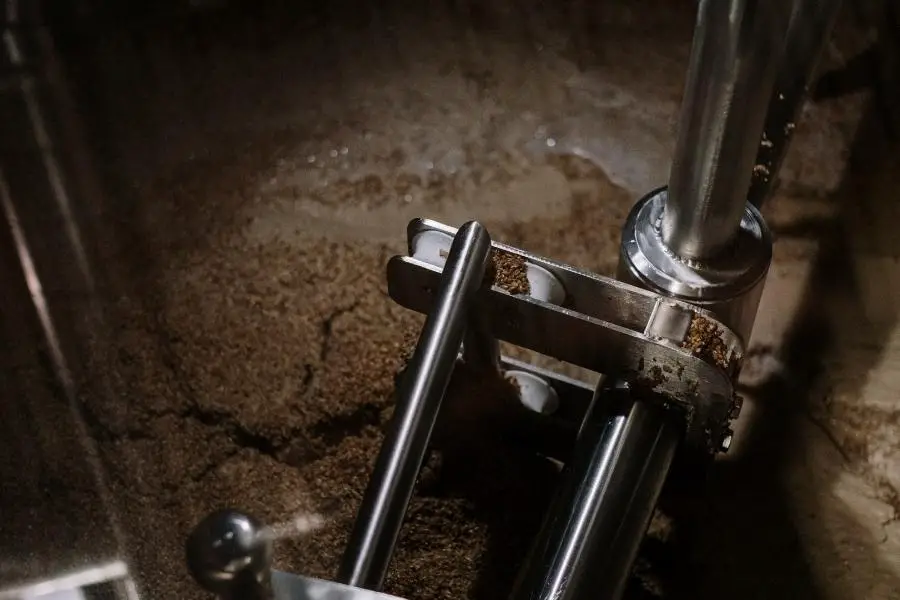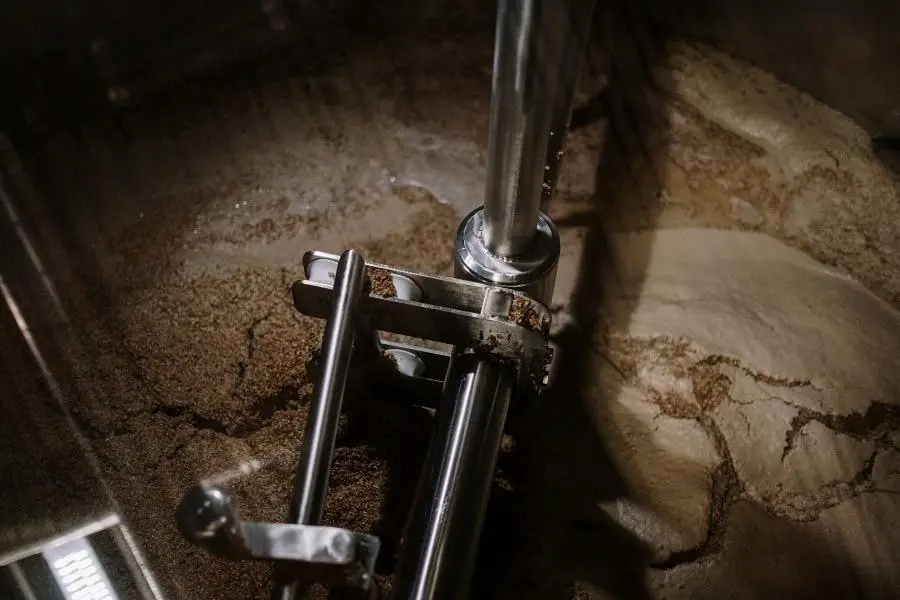If you buy something through a link in our posts, we may get a small share of the sale.
Partial mash vs. all grain, how do these brewing methods compare, and what are the benefits of each? If you’re new to brewing, or even an experienced brewer looking to expand your brewing horizons, you’ve probably wondered about the difference between these two methods and which one is right.
Contents
Partial Mash vs. All Grain Overview
Brewing had come a long way since the early days when brewers simply boiled their ingredients in water to extract the sugars needed for fermentation. Today, there are many different brewing methods available to brewers, each with its own set of benefits and drawbacks.

Brewers are working with ever-more sophisticated brewing equipment and can control every aspect of their brewing process, from the temperature and duration of the boil to the type of yeast used for fermentation. This way, brewers can produce beers that are consistent in quality and flavor from batch to batch.
One of the decisions that brewers have to make is whether to brew using all grain or partial mash methods. These methods have a few key differences that can greatly impact the final product’s flavor and quality. Therefore, knowing the difference between all grain and partial mash brewing is essential for any brewer who wants to produce the best beer possible.
Partial Mash
Partial mash brewing is the process of using part grain mash and part malt extract to brew beer. This method is often used by beginner brewers or those who want to brew smaller batches of beer. In partial mash brewing, a portion of the grains is mashed, while the rest are left un-mashed and are used to add color, body, and flavor to the beer.
The un-mashed grains are usually adjuncts, which are grains used in small quantities to enhance the beer’s flavor or body. The most common adjuncts used in the partial process are flaked grains, which add a creamy mouthfeel and enhanced flavor to the beer. It also allows for greater control over the final product’s flavor.
The temperature of the mash is also important in the partial process. Most beginner brewers use a single-temperature infusion mash, meaning that all grains are mashed at the same temperature. This is the easiest mashing method, producing a beer with good flavor and body. However, more experienced brewers may opt for a multi-step infusion mash, in which different temperatures are used to extract different sugars from the grains.
Advantages
- The process produces broader flavors due to the mixing of extracts
- The process is less energy intensive than all-grain brewing
- It is a good entry point for new brewers as it is less complicated than all-grain brewing
- It produces fresh-tasting beer because you are using fresh grains
- The process is less time-consuming than all-grain brewing
Disadvantages
- The process is less consistent than all-grain brewing
- The final product may not be as high in quality as an all-grain beer
All Grain
All grain process is the method of using malted grains to brew beer. This method is often used by experienced brewers who want complete control over their beer’s final flavor and quality. In all grains, the brewer uses hot water to extract sugars from the malt, which is then fermented by yeast to produce alcohol.
All grain brewing allows for greater control over the final product’s flavor and quality. For example, the brewer can choose the type of malt used and the mash temperature and duration. This way, the brewer can tailor the beer to their preferences. All grain brewing also allows for better utilization of adjuncts, such as unmalted grains or sugars.

The beginning of this process is always the same: mashing. It requires a mash tun, a vessel in which the malt is mixed with hot water and allowed to sit for some time. The mash tun is usually insulated to maintain a consistent temperature. Mashing allows enzymes in the malt to convert starches into sugars, which will be later fermented by yeast.
Advantages
- The brewer has full control of the brewing process and ingredients because the brewer does all the steps.
- The brewer has a sense of accomplishment since they can create a beer from scratch.
- The final product usually has a better flavor since the brewer can select the specific ingredients that they want and mash them to their desired specifications.
Disadvantages
- The brewing process is more complicated and time-consuming than other methods.
- The brewer needs to have a good understanding of the brewing process and ingredients to produce a high-quality product.
Comparison Between the Two
The two processes are essential in brewing beer, and every beer lover should understand each process’s differences and similarities. Here’s a quick comparison:
Similarities
- Both methods require using hot water to extract sugars from the malt.
- Both methods require using a mash tun to mix the malt and hot water.
- Both processes require the use of yeast to ferment the sugar-water mixture.
- Boiling the wort is also necessary for both methods to sanitize the liquid and help with the hops extraction.
- Both methods can be done on a small or large scale.
Differences
- The all-grain method requires the use of malted grains, while the partial mash process also uses unmalted grains or malt extract.
- The all-grain brewing process gives the brewer more control over the final flavor and quality of the beer.
- The partial process is less time-consuming and does not require as much knowledge of the brewing process.
- All-grain brewing requires more equipment than the partial method due to the use of malted grains.
- All-grain brewing is considered the traditional method of brewing beer, while the partial mash is considered a shortcut since it uses malt extract.
Major Distinguishing Factor
The major distinguishing factor between all-grain and partial brewing processes is the use of malt. The all-grain process requires the use of malted grains, while the partial method also uses unmalted grains or malt extract.
Another factor that distinguishes the two methods is the ease of brewing. The all-grain process is more complicated and requires more time and knowledge. On the other hand, the partial process is less time-consuming and does not require as much knowledge of the brewing process.

When to Use Partial Mash
The best time to use the partial method is when you want to save time or do not know how to brew all-grain. This is because the partial method is less time-consuming and does not require as much knowledge. The process also uses malt extract, which makes it easier.
When to Use All-Grain
All-grain brewing is the best method to use when you want to have full control over the final flavor and quality of the beer. This is because all-grain brewing gives the brewer more control over the brewing process and ingredients. The all-grain method is also considered the traditional method of brewing beer and is usually used by experienced brewers.
Which Is Better: Partial Mash or All-Grain?
In general, all-grain brewing is considered the better method because it gives the brewer more control over the final flavor and quality of the beer. This means that the beer is usually of a higher quality when brewed using all-grain and has a more complex flavor.
However, the partial method is a good option for those who want to save time or do not have the knowledge to brew all-grain. This is because the partial process is less time-consuming and does not require as much knowledge of the brewing process.
Conclusion
All these processes are partial steps in brewing beer. They all use different methods to achieve the final product. In terms of quality, the all-grain process is better than partial mash brewing. However, in terms of time and ease of brewing, the partial process is better than the all-grain method.

